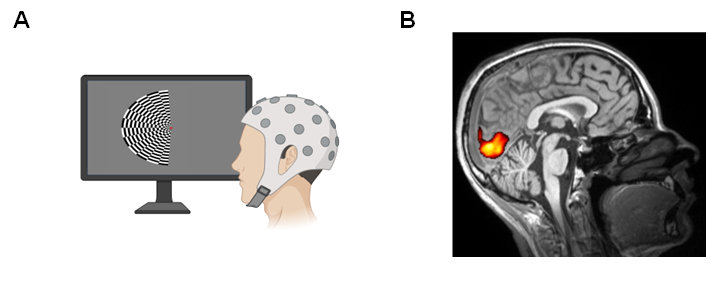In this case study, we hear from Brandon Ingram (based at the School of Psychology), who has been utilising BEAR to deepen their understanding of the mechanisms our brains employ to interpret visual stimuli.

My research focuses on integrating electroencephalography (EEG) and functional magnetic resonance imaging (fMRI) to gain a more comprehensive understanding of how our brains process visual information. EEG is a technique employed to measure brain activity by utilising an array of electrodes placed on the participant’s scalp, enabling the recording of small changes in electrical potentials generated by the brain.
This provides a fast measure of brain activity, allowing us to observe changes in brain activity that occurs over several milliseconds. Conversely, fMRI is an imaging technique that provides a measure of brain activity by recording the flow of blood across the brain. Unlike EEG, fMRI records slower changes in brain activity, often spanning several seconds. However, it is capable of localising brain activity from anywhere within the brain at a millimetre scale, whilst EEG is limited to recording from brain regions close to the scalp.
Thanks to BEAR, I can easily overcome these issues using the research data storage and BlueBEAR
Thus, by recording both measures simultaneously we can accurately locate activity within the brain, whilst also measuring fast changes in brain activity. Together, I use these measures to investigate how the brain responds to visual stimuli, and how visual processing interacts with the ongoing activity within the brain.

B) Visual activity localised by fMRI.
However, collecting both methods simultaneously comes with various computational challenges. This approach essentially doubles the amount of data recorded, with data from a single subject often requiring several gigabytes of storage. Furthermore, both modalities require a large amount of computationally intensive preprocessing before they can be analysed. Thanks to BEAR, I can easily overcome these issues using the research data storage and BlueBEAR.
The RDS provides a simple on-site storage solution
The Research Data Store provides a simple on-site storage solution, fulfilling GDPR requirements, providing easy access and daily data backups. Additionally, BlueBEAR allowed me to perform the pre-processing for both modalities in parallel, reducing the total run time from weeks to hours.
We were so pleased to hear of how Brandon was able to make use of what is on offer from Advanced Research Computing, particularly to hear of how he has made use of BlueBEAR HPC and its storage – if you have any examples of how it has helped your research then do get in contact with us at bearinfo@contacts.bham.ac.uk.
We are always looking for good examples of use of High Performance Computing to nominate for HPC Wire Awards – see our recent winners for more details.
